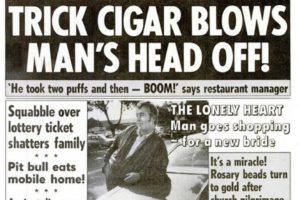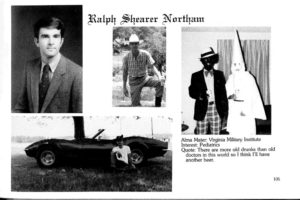On a hot and humid July 1964 night in Jonesboro, Louisiana, there occurred a series of unheralded but nevertheless pivotal events in the parallel histories of the civil rights movement and the Second Amendment to the U.S. Constitution. These events unfolded during the Freedom Summer conducted by the Congress of Racial Equality which had come to Louisiana and Mississippi to register black voters and to integrate the public schools. Since CORE’s arrival, racial tensions and the threat of violence had been high. In the preceding month, CORE volunteers Michael Schwerner, Andrew Goodman and James Chaney had gone missing and foul play was strongly suspected. Those suspicions were confirmed on August 4, 1964, when the FBI unearthed their bodies in Neshoba County, Mississippi.
On the night in question, shortly after sundown, persons unknown cut the electricity to segregated Jonesboro’s black community. Neighbors gathered and quietly visited in the darkened streets ignorant of what was heading their way.
But, after a spell, they saw in the distance the headlights of a caravan of fifty approaching vehicles being led by a police car with a pulsing red flashing dome light. Delighted and excited children ran into the streets to welcome what they took to be an impromptu parade.
But, as the cars approached, it could be seen that their license tags were covered and their occupants were wearing Ku Klux Klan robes. As they passed through the dark streets, the Klansmen began tossing leaflets warning the black residents to stay away from the CORE volunteers as well as the civil rights movement.
After spreading their leaflets, the night riders fanned out across Jackson Parish to light burning crosses. At the same time, a howling mob of 100 armed white men gathered outside the parish jail where a group of civil rights protesters were being held prisoner by local law enforcement.
According to Lance Hill’s The Deacons for Defense – Armed Resistance and the Civil Rights Movement (University of North Carolina Press 2004), it was these events that galvanized a group of black men to take up arms. In his scholarly book, Hill spells out how these Jonesboro men formed a clandestine organization with the goal of protecting civil rights activists from the Ku Klux Klan and other racist thugs. Under the name Deacons for Defense and Justice this armed organization grew to hundreds of members in twenty-one chapters throughout Louisiana and Mississippi.
As described by Hill, “The Deacons guarded [civil rights]marches, patrolled the black community to ward off night riders, engaged in shoot-outs with Klansmen, and even defied local police in armed confrontations.”
This is, of course, at variance with the popular and widespread portrayal by academia, Hollywood and the mainstream media of the civil rights struggle as being, in essence, a victory won solely by Gandhian, non-violent protest. Hill’s account of the Deacons stands in sharp contrast to that soothing tale and documents a central truth, i.e., that when a segment of American society was threatened and oppressed by the established political and government power structure, ordinary citizens were able to resist and prevail by availing themselves of their right under the Second Amendment to keep and bear arms. In short, the civil rights movement survived and ultimately won in no small measure because the Second Amendment, functioning precisely as the Founders intended, empowered ordinary citizens to defend themselves against government tyranny.
In the equally compelling This Non-Violent Stuff’ll Get You Killed – How Guns Made the Civil Rights Movement Possible (Basic Books 2014), Charles E. Cobb, Jr. tracks the use of firearms and the threat of armed force by elements of the civil rights movement. Most tellingly, the book describes how, after his home in Montgomery, Alabama was bombed, the Reverend Martin Luther King applied in 1956 at the local sheriff’s office for a permit to carry a concealed firearm. Although his application was denied, King kept many firearms in his home which was described by one observer as an “arsenal.” This account is mirrored in Hill’s book.
A few years ago, I met and immediately bonded with a distinguished black lawyer. He had grown up in Mississippi during the civil rights movement at the same time I was coming of age in Georgia. Needless to say, we had plenty to talk about albeit from radically different perspectives. As a white kid living in Atlanta, I witnessed a slightly watered down version of the racial discrimination that pervaded the old Jim Crow South. But my friend, who is a few years younger, had lived in Mississippi which, even by Georgia standards, was known to have practiced the harshest forms of segregation.
He told me a fascinating story about his father. On most Saturdays, his father would take him down to the local barbershop where a group of friends and neighbors would meet in the backroom while the kids played outside. It wasn’t until the day of his father’s funeral that he learned the true purpose of those gatherings. That’s when he was told by two of the mourners that his father had been an active member of the Deacons for Defense and Justice and that those meetings at the barbershop had been to plan defense operations and to manage the affairs of the Deacons’ local chapter. All of this had been kept secret to protect the identities of the Deacons so that they and their loved ones would not be targeted for retaliation by law enforcement and vigilantes.
My friend also shared a fascinating tidbit about how the Mississippi Deacons had armed themselves. Even though they had the usual assortment of pistols, rifles and shotguns, the Deacons had, through contacts with sympathetic longshoremen in the Port of Mobile, obtained a shipment of stolen “Army rifles” which they used in confrontations with the Klan. That made me chuckle as I envisioned a bunch of Kluxers night riding up to a rural black church with their shotguns only to be confronted by a band of Deacons armed with fully automatic M-16s.
It is most likely that, on more than one occasion, the mere sight of those sure-enough “weapons of war” machine guns in black hands prevented a lot of bloodshed as the Kluxers took one look and wisely beat feet to safety.
The moral of that story can be summed up as follows: gun control doesn’t work not even when the government uses all of its powers to keep an oppressed citizenry disarmed and submissive. The Deacons for Defense and Justice and thousands of other armed black civil rights advocates proved that conclusively. And society at large is better for it.
Our enlightened progressive betters mock as paranoid fantasy the idea that there would ever be a need for American civilians to arm themselves in order to resist government oppression. That sort of governmental abuse, they tut-tut, won’t and can’t happen here. But it has happened here and, as recently as the 1960s, armed civilian resistance to tyranny did work. Just ask the Deacons for Defense and Justice.
Post script: if you are interested in buying the referenced books, you can do so through the Amazon ad link appearing on the right side of this page or by clicking this link for Deacons for Defense and Justice and this link for This Non-Violent Stuff’ll Get You Killed.



Leave a Reply
Leave a reply.